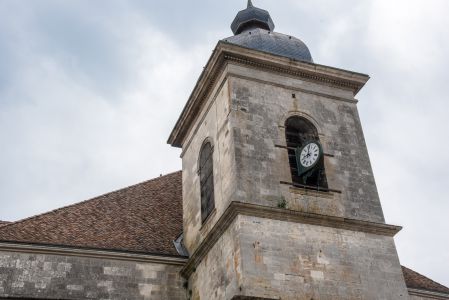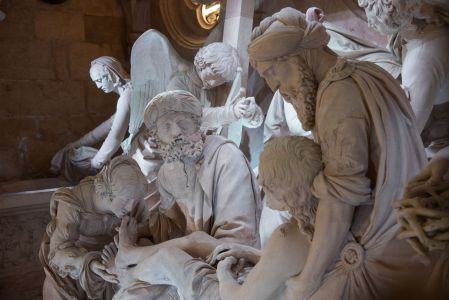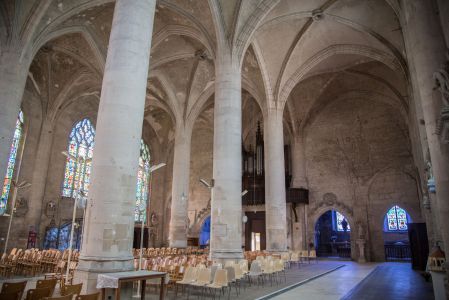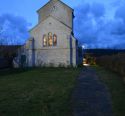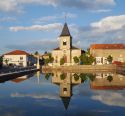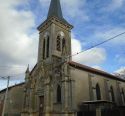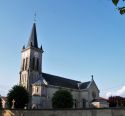Collegiate Church | XIII-XVI-XIX | | Catholic Church




Map
Opening hours
01 April - 30 September
Mon 8.00 - 20.00
Tue 8.00 - 20.00
Wed 8.00 - 20.00
Thu 8.00 - 20.00
Fri 8.00 - 20.00
Sat 8.00 - 20.00
Sun 8.00 - 20.00
01 October - 31 March
Mon 8.00 - 17.00
Tue 8.00 - 17.00
Wed 8.00 - 17.00
Thu 8.00 - 17.00
Fri 8.00 - 17.00
Sat 8.00 - 17.00
Sun 8.00 - 17.00
Guided tour
Description
Saint-Etienne preserves the white marble masterpiece of Ligier Richier, the Tombstone. Also known as the Sepulchre de Saint-Mihiel, this group of 13 human-sized characters appears in a breathtaking setting.
You can still admire a 16th century Virgin Mary, an 18th century Renaissance altarpiece and 18th century woodwork. Two 17th century funerary monuments were built by Ligier Richier descendants.
Photos
Remarkable elements
The stained glass windows
Blown out during the Great War, the stained glass windows were replaced by more modern imagery created by the Lorin workshops in Chartres. Characteristic of Art Nouveau with their plant-like shapes and predominantly blue colour, the scenes depicted are mostly from the life of Christ. The most surprising is the scene showing the temptations of Jesus in the desert, which features a green devil (stained glass windows on the left as you enter the building).
Translated with www.DeepL.com/Translator (free version)
The choir
As you enter the church, you can admire the choir of the collegiate church, whose architecture does not seem to match the furnishings. The altarpiece, panelling and altar come from the abbey church of Saint-Benoît-en-Woëvre (55), which belonged to the Cîteaux Order. The Renaissance-style altarpiece would have had space to accommodate the recumbent statue of Saint Lucy of Scotland, now housed in the Musée d'Art Sacré de Saint-Mihiel, after an absence of 167 years.
Translated with www.DeepL.com/Translator (free version)
Notre-Dame de Bon Secours
Notre-Dame de Bon Secours is a 17th-century sculpture that came from the Minimes de Saint-Mihiel convent and was moved after the Revolution. It depicts the crowned Virgin Mary wearing a long cloak, sheltering members of the clergy on one side and the ducal family on the other. It is based on a sculpture commissioned by the Duke of Lorraine René II in 1505 and now housed in the Cordeliers church in Nancy (54).
Translated with www.DeepL.com/Translator (free version)
Richier monuments
The church is home to a number of works belonging to the Richier dynasty, the most impressive of which is the Sepulchre by Ligier Richier himself. This masterpiece is complemented by two funerary monuments attributed to the Sammielloise School. Located in the Saint-Joseph chapel is that of Blaise Lescuyer, lieutenant-general of the baillage of Saint-Mihiel, dating from the late 16th - early 17th centuries. This bas-relief features the allegories of Charity and Faith, with what appears to be a representation of the deceased in the centre. The second funerary monument faces the Sepulchre. It dates from the end of the 16th century and depicts two small angels lifting a drapery under which a skull appears. This monument was erected for the Dieulewart-Pourcelet families.
Translated with www.DeepL.com/Translator (free version)
The painting of Saint Vincent de Paul
On the left-hand side of the church, you can see a 19th-century painting of Saint Vincent de Paul helping the destitute of Saint-Mihiel after the Thirty Years' War in 1638. In the background of this painting is the only iconographic representation of the former Gothic church, which was remodelled in the 19th century.
Translated with www.DeepL.com/Translator (free version)
The remains of the former Gothic church
All that remains of the former 13th-century Gothic church are the central gallery and four chapels. Between 1500 and 1543, the church was enlarged, but in 1823, in order to widen the street, the square bell tower and the first four bays were demolished.
Translated with www.DeepL.com/Translator (free version)
Events at
Saint-Etienne
Nearby
Circuit
Treasures of the Sammiellois
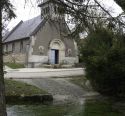
Around Saint-Mihiel, bell towers regularly stand out in the hills. Push open the doors of these churches to discover the treasures of the Sammiellois. Donzelli, Ligier Richier and others await you...



